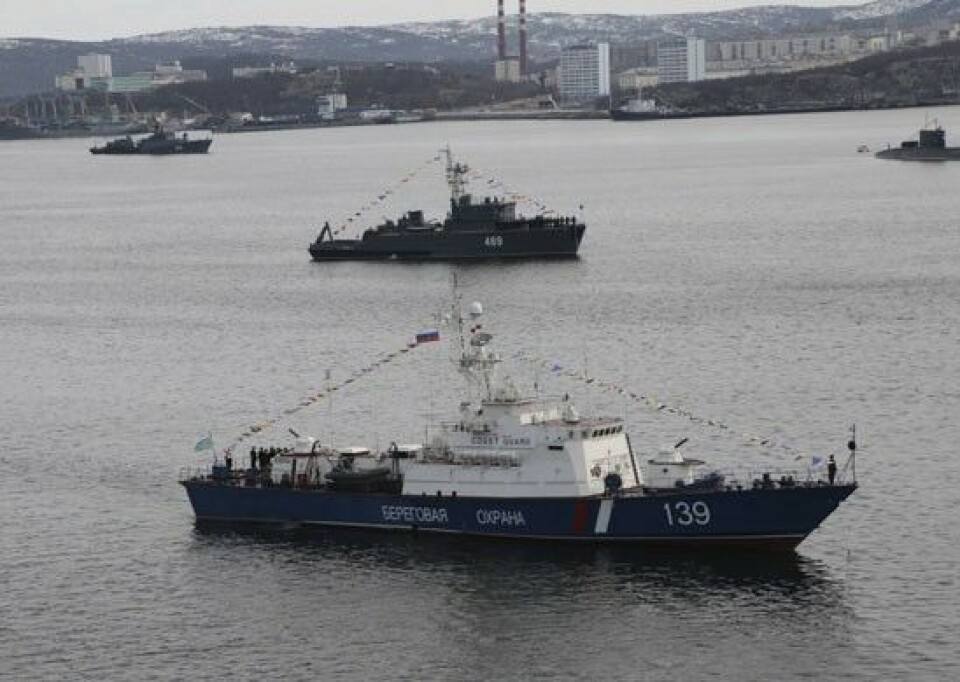
New FSB base opens way for more operations in Arctic
The Russian security service starts year 2019 with a new base for its coast guard vessels in Murmansk.
p.p1 {margin: 0.0px 0.0px 14.0px 0.0px; line-height: 16.0px; font: 14.0px Helvetica; color: #000000; -webkit-text-stroke: #000000; background-color: #ffffff}p.p2 {margin: 0.0px 0.0px 10.6px 0.0px; line-height: 20.0px; font: 17.0px Georgia; color: #292929; -webkit-text-stroke: #292929; background-color: #ffffff}span.s1 {font-kerning: none}
From now on, we will not stay idle in port for long, Mikhail Karpov, Deputy Head of the FSB’s West Arctic border division, made clear as he on the 26th December officially opened the new coast guard base.
«We will spend more time in the Arctic, at sea, to protect the legitimate interests of Russia in the Arctic zone,» he underlined.
The base includes new state-of-the-art mooring points, a hangar and checkpoints, Murman TV informs. The new facilities will enable the coast guard service to significantly cut service and maintenance time on its vessels and enhance preparedness.
The major construction works on site started already in 2016, TASS informs.
The new base in Murmansk is part of a bigger upgrade of the FSB’s operational capacities in the Arctic. A similar new base was opened in Arkhangelsk in 2017. Several new patrol vessels have been built and expanded powers added to the service.
In 2016, President Putin signed a bill that gives the FSB the full prerogatives for law enforcement on the Northern Sea Route.
Since then, the FSB has autonomously taken action against ships operating along the Russian Arctic coast. From before, the FSB includes the border guard service as well as the Coast Guard.
In 2017, a powerful new coast guard vessel, the «Polyarnaya Zvezda», was included in the fleet of the Murmansk border service. Another new vessel, an ice-breaking Purga-Class ship, is expected to be included shortly.
The new powers in the Arctic comes as shipping on the Northern Sea Route is on rapid increase. In 2018, about 18 million tons of goods was transported on the route, and that figure is expected to increase to 24 million tons in 2019.
















